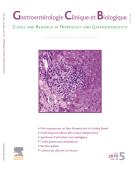Cholangiocarcinoma: Descriptive epidemiology and risk factors - 01/04/10

Summary |
In theory, the term of cholangiocarcinoma is reserved for the tumours originating from the intrahepatic bile ducts. The problems of classification of the most frequent hilar tumours and the absence of histopathological confirmation in a large percentage of cases in cancer registries from many countries show the difficulty of establishing the specific epidemiologic behaviour of intrahepatic cholangiocarcinoma (ICC). There are clearly two types of ICC: the first one is the consequence of the recurrent infection of the biliary ducts by the parasites Opisthorchis viverrini and Clonorchis sinensis, and is only seen in the areas of Southeast Asia where liver flukes are endemic. In these areas, incidence and mortality rates of ICC are extremely high. Both parasites have been classified class I carcinogens by the International Agency for Research on Cancer. The other type of ICC is a cancer much rarer but present in the whole world. Some risk factors have been well-established (chronic inflammation of biliary ducts, hepatitis, thorotrast, etc) but many patients do not have any of these factors. An increase in incidence and mortality of this second type of ICC has been seen in recent years, mostly in developed countries. There is an ongoing discussion in the literature about its authenticity and potential causes.
Il testo completo di questo articolo è disponibile in PDF.Résumé |
En théorie, le terme de cholangiocarcinome est réservé aux tumeurs issues des voies biliaires intrahépatiques. Les problèmes de classification des fréquentes tumeurs hilaires et l’absence de diagnostic histopathologique de confirmation dans un large pourcentage de cas recensés dans les registres de cancers montrent la difficulté à établir le comportement épidémiologique spécifique du cholangiocarcinome intrahépatique (CCI). Il y a clairement deux types de CCI : l’un est la conséquence de l’infection et la réinfection permanente de certaines populations par les parasites Opisthorchis viverrini et Clonorchis sinensis, et se voit uniquement dans les régions d’Asie du Sud-Est où la distomatose est endémique. Dans ces régions circonscrites, les taux d’incidence et de mortalité du CCI sont extrêmement élevés. Les deux parasites ont été classés carcinogènes de classe I par le Centre international de recherche sur le cancer. L’autre type de CCI est un cancer beaucoup plus rare mais présent dans l’ensemble du monde. Certains facteurs de risque sont bien établis (inflammation chronique des voies biliaires, hépatite, thotraste, etc.), mais la vaste majorité des patients atteints ne possèdent aucun de ces facteurs. Une augmentation de l’incidence et de la mortalité de ce second type de cancer a été observée au cours des années 1990 et alimente une discussion dans la littérature internationale à propos de son authenticité et de ses causes.
Il testo completo di questo articolo è disponibile in PDF.Mappa
Vol 34 - N° 3
P. 173-180 - Marzo 2010 Ritorno al numeroBenvenuto su EM|consulte, il riferimento dei professionisti della salute.

